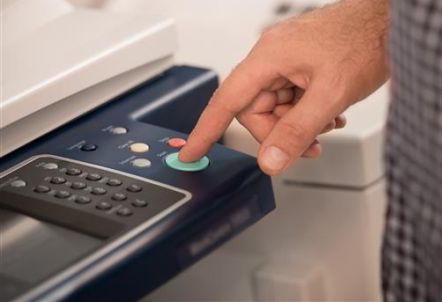Your business probably still struggles with using paper in a digital world. You’re not alone. Not by a long shot. In an Aberdeen Research survey, nearly half the respondents reported that their basic business processes rely on some kind of paper documents or digital unstructured data. Over half said their business data was stored in these formats. They also identified problems that went along with that:
- Using and processing documents takes too long – 39%
- Costs too much – 29%
- Volume growing too fast – 29%
Digitizing the flood of information helps resolve some of these issues, but where do you start with document digitization? You can’t go wrong by looking at your processes. Digital transformation relates to our everyday work processes as much as it does to the next big technology disruptor. The office of the future will be a digital office powered by digital processes. It’s in the day-to-day work where transformation pays off for traditional companies in terms of customer satisfaction, employee productivity, competitive advantage and reduced costs.
Bridging the Gap Between Paper and Digital
The opportunity to improve operational excellence, for most organizations, can be tied directly to the ability to transition from paper-based to digital ways of working. This transition is often connected to scanning. At some point in your move to the digital office and digital future, scanning will be on the table.
There has been some good thinking on this topic already. Document management expert Kevin Craine describes the five stages of scanning in his white paper on the topic. He defines the five phases of capture, various risks and opportunities associated with each, and suggests questions to help you to decide when the next phase makes sense for your organization.
Here’s an overview of the five stages, according to Craine:
Phase 1 – Scan and Store: Entry level of the “capture continuum.” Scan paper documents and store them in digital form. Also known as “imaging.”
Phase 2 – Basic Recognition: Technologies like Optical Character Recognition (OCR) read data from document images and automatically populate index fields or zones. Things like PO numbers, amounts, dates or claim numbers are examples of Phase 2 captured data. Many capture systems with zonal OCR require document templates built by programmers, which may incur additional expense and effort to enter this stage at scale.
Phase 3 – Intelligent Data Extraction. Advanced data extraction moves beyond structured documents to handle more source types. Document management systems go from capturing basic index information to extraction of multiple fields and line item detail. Flexible, intelligent systems pull more detailed content from documents where data locations may not be known in advance, such as ad hoc invoices or healthcare documents. That information gets sent to backend databases and applications. Intelligent data recognition might read handwriting, map fields, and leverage advanced data codes and glyphs.
Phase 4 – Distributed or Mobile Capture: This phase introduces different capture devices at point of entry, like MFPs, tablets and smartphones. Devices with capture capabilities let employees in branches and other locations capture and enter information into a system directly, rather than shipping it to a central location for processing. According to a 2014 AIIM study, 45 percent of companies feel that mobile capture is important for improved process agility and customer service. One constraint for Phase 4 is tying up knowledge workers to do the work of a centralized processing facility.
Phase 5 – Enterprise Capture: “The vision is one where all documents are captured, digitized and stored with the least amount of manual labor,” Craine explains. The capture system accepts documents in any format, including paper via scanners, fax or MFPs; desktop documents; email, data streams; and from mobile devices like smartphones and tablets.
If your enterprise is serious about Digital Transformation, you’ve got a lot of work to do, but half the battle is knowing where to start. The message is clear: start with capturing your documents and digitizing their data, and you’ll be well on your way to digital processes, digital offices and the transformed future.



